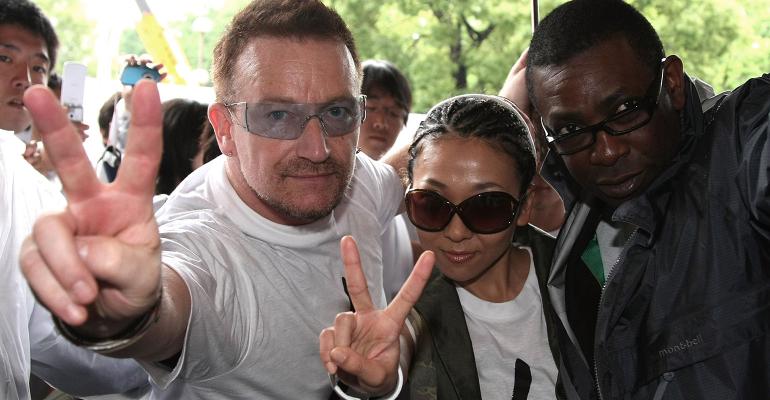Around the globe, many remarkable organizations work to help people at the very bottom of the economic, justice and environmental pyramids. Each year, U.S. donors contribute billions of dollars to advance causes in other parts of the world—especially when these people and causes appear in the headlines.
Philanthropist Warren Buffett sums it up concisely: “If you’re in the luckiest 1 percent of humanity, you owe it to the rest of humanity to think about the other 99 percent.”
International donors include individuals, families, corporations, foundations and donor-advised funds. The reasons that they donate are simple: the global needs are enormous and a donated dollar usually goes much further overseas than it does domestically. Many donors look overseas to see where their philanthropy can have the greatest impact and help repair the world.
International giving is important, but not necessarily preferable to giving locally. There’s much to be said for addressing issues like hunger, education, housing, disaster relief and environmental protection in our own communities before we look abroad. However, for a variety of good reasons, many donors also look overseas to help others. In an ideal situation, donors with sufficient capacity can do both.
Giving internationally isn’t the same as giving domestically. Because it’s governed by a complex set of U.S. government rules and regulations, your clients should undertake certain types of international giving only after consulting with their advisors and other tax experts.
Four Ways
U.S. donors can make tax-deductible donations to fund charitable work in other countries in four principal ways:
- Donate to Internal Revenue Code Section 501(c)(3) nonprofits that work overseas or support international organizations. Many Internal Revenue Service-approved 501(c)(3) organizations were formed specifically to advance charitable work internationally. Examples include UNICEF USA, Project C.U.R.E., Global Greengrants Fund, Against Malaria Foundation, Africa School Assistance Project and Friendship Bridge.
Other organizations set up IRS-approved “Friends of” or “American Committee for” Section 501(c)(3)s that raise tax-deductible donations in the United States for distribution to a specific nonprofit organization working overseas. One example is the American Committee for the Weizmann Institute of Science.
By donating directly to U.S.-approved nonprofits, donors avoid the complicated legal or tax hurdles required for donations made directly to organizations overseas.
- Donate internationally through a generic intermediary charity that specializes in funding international nonprofits. Such intermediaries are IRS-approved Section 501(c)(3)s and well-equipped to generate the necessary documentation and opinions needed for a gift to be legal and tax-deductible. Because of the need to perform due diligence, these organizations often charge a fee for their service. Examples include CAF America, Global Giving and Global Impact.
- Donate to international charities through a donor-advised fund at your community foundation or wealth-management firm. Some DAFs will accept the donor’s advice to give to an international charity. They will either conduct the due diligence themselves or connect with an intermediary organization for this purpose. Examples include Schwab Charitable and some community foundations.
- Give directly to international organizations that don’t have IRC Section 501(c)(3) status.
New Regulations Add Clarity
In September 2015, the IRS issued regulations that set forth new standards for international giving. In September 2017, it issued additional regulations that provided clarity to the process used to make a required “good faith determination” that an overseas organization is “equivalent” to a Section 501(c)(3) public charity.
The focus of these and other regulations is to ensure that any organization receiving contributions from U.S. donors is actually equivalent to a U.S. public charity and that the recipient organization is using the donated funds for genuinely charitable purposes. Also, the regulations help ensure that the international recipient isn’t engaged in terrorist activities.
“Not until the creation and maintenance of decent conditions of life for all people are recognized and accepted as a common obligation of all people and all countries - not until then shall we, with a certain degree of justification, be able to speak of humankind as civilized,” said Albert Einstein in The World As I See It.
U.S. donors who want to build the kind of planet envisioned by Einstein have many viable options. The methods outlined above can help donors deploy their charitable dollars, legally and efficiently, in meaningful ways around the world.
Bruce DeBoskey, J.D., is a philanthropic strategist working across the U.S. with The DeBoskey Group to help families, businesses and foundations design and implement thoughtful philanthropic strategies and actionable plans.





